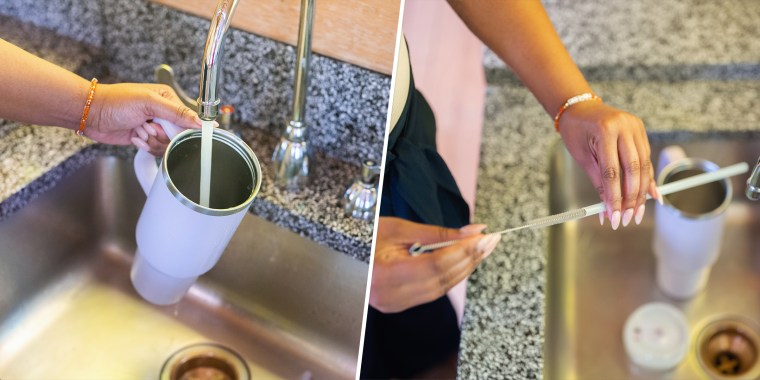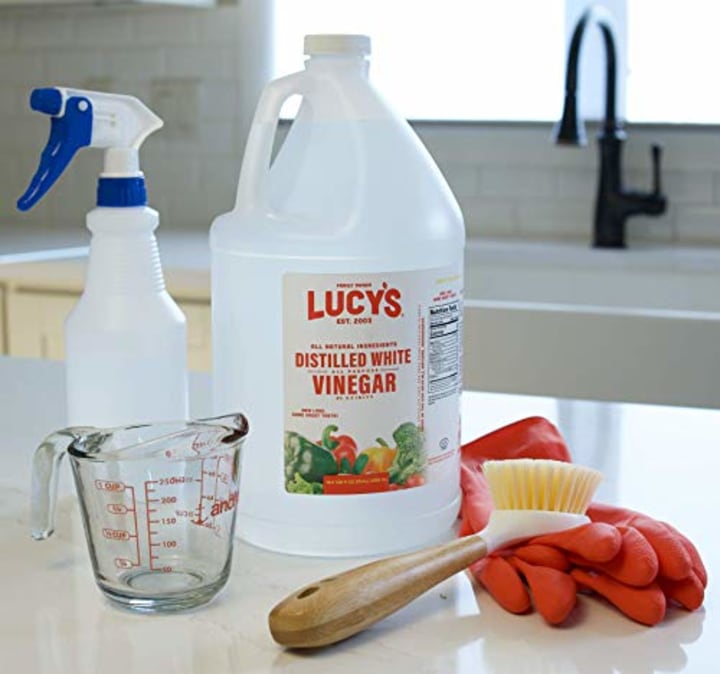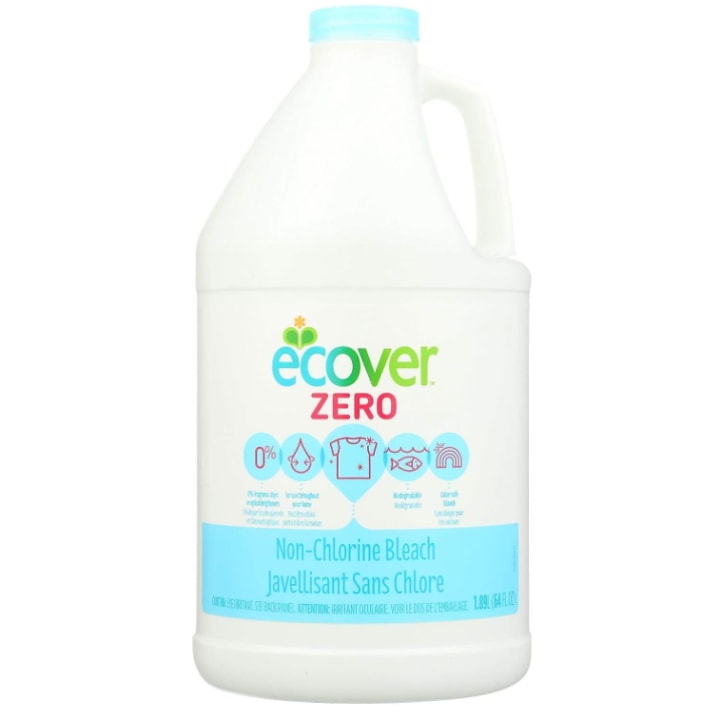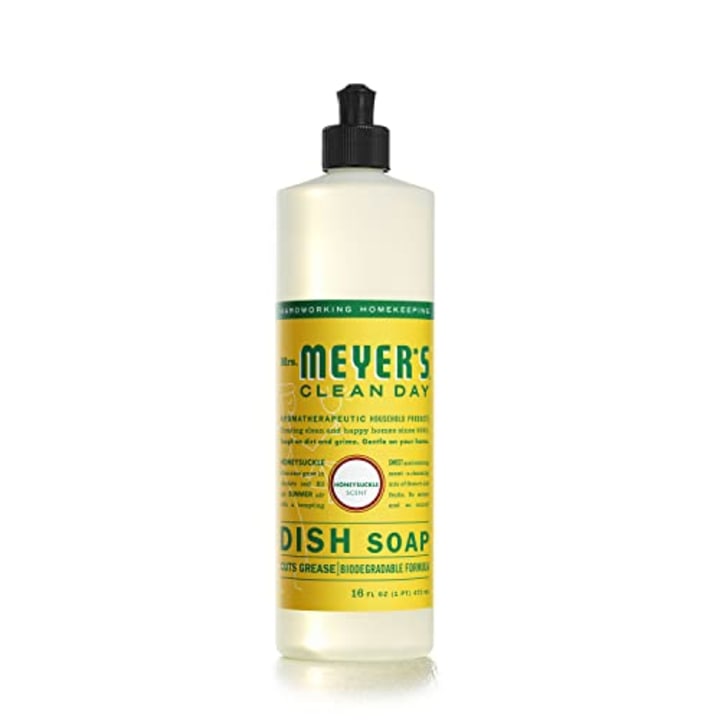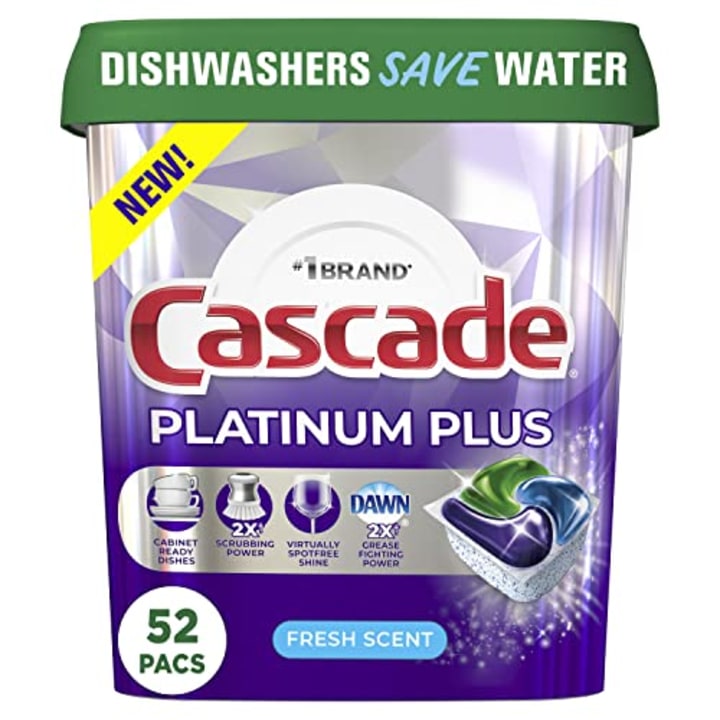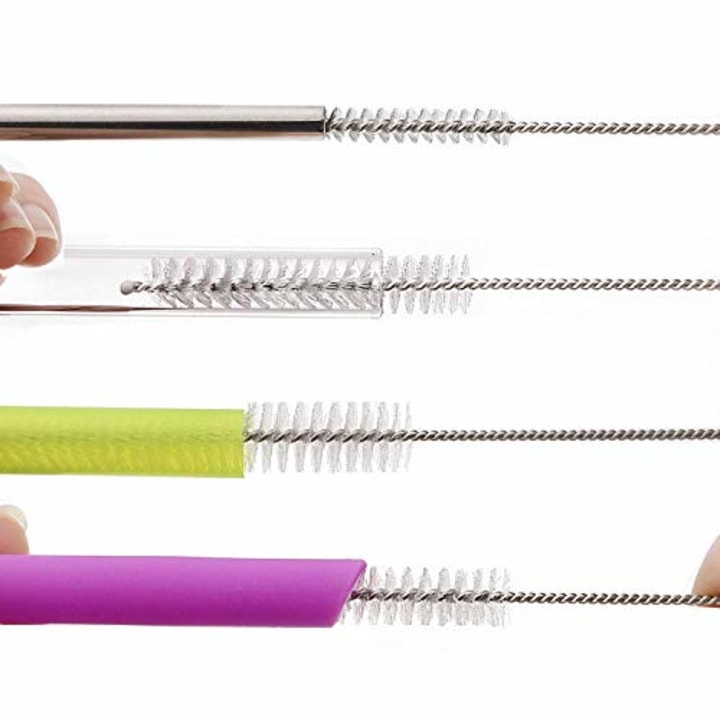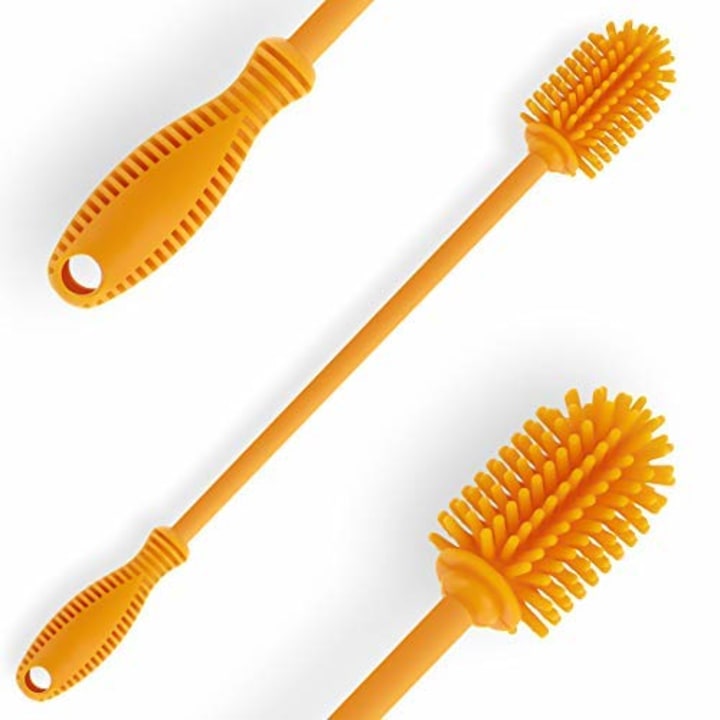You and your reusable water bottle go just about everywhere together, from the gym to work and back home as you attempt to meet your daily water intake goal. In between all of those times you grasp, sip and repeat, how often are you actually cleaning your water bottle?
In a perfect world, that answer would be every day. Ryan Holmes, director of product development at HydroJug, says, "You should treat your reusable water bottle just like any other dishware you own and clean it thoroughly and frequently. Daily cleanings are ideal.”
Holmes shares a few tips for the best (and easiest) ways to clean different types of water bottles from plastic to stainless steel.
What to use | How to clean plastic water bottles | Water bottles with straws | Stainless steel | Cleaning products | FAQs | Meet the expert
What should you use to clean your water bottle?
While there are a variety of reusable water bottles on the market, the products to clean them all are mostly universal. Holmes says the the best cleaning agents include white vinegar, baking soda and soap.
The tools you use to clean your water bottle are just as important. “To make sure you’re getting the hard-to-reach areas of your bottle, the best thing to do is use a bottle brush,” he advises.
“A lot of bacteria and mildew can gather in the small crevices of your bottle so it is important you are reaching those areas," Holmes adds. He's not wrong. According to the Federal Emergency Management Agency, mold can grow on damp surfaces within 24-48 hours.
How to clean plastic water bottles
For your traditional polypropylene (plastic) water bottles, Holmes offers three cleaning methods.
- Soap and water. Keep it simple by rinsing your bottle with warm soapy water on the inside and outside. After cleaning, leave it out to air dry.
- White vinegar. Fill your bottle a fifth of the way with white vinegar, then fill the rest of the bottle with water. Let it sit overnight, rinse it out in the morning and let it air dry.
- Dishwasher. This tip depends on if your bottle is dishwasher-safe, so be sure to check for that label. Holmes recommends washing your bottle on the top rack. (If it doesn't fit in there standing up, just lay it down.)
How to clean water bottles that have straws
If your water bottle has a straw, Holmes emphasizes the importance of remembering to clean it regularly because the straw can harbor bacteria.
While there are specific straw-cleaning brushes, he says if you don't have one on hand, a pipe cleaner will get the job done.
"Pour dish soap directly on to the pipe cleaner brush and push it through your straw. Once you have scrubbed the inside of your straw, you will rinse thoroughly. If your straw is wide, use two pipe cleaners twisted together,” he suggests.
When cleaning the bottle itself, you can typically follow any of the methods from above.
How to clean stainless steel water bottles
Holmes says stainless steel bottles can be cleaned with dish soap, hot water and a cleaning brush, but he also offers another option if you're looking to achieve a deeper clean.
"You can put 2 tablespoons of distilled (white) vinegar in your bottle and fit [it] halfway with warm water," he guides. "Put the cap on and give it a good shake. Use your brush to give it a good scrub, then rinse it with water and leave it to dry completely before using."
Water bottle cleaning products
Lucy’s Distilled White All-Purpose Vinegar
Vinegar is a multi-purpose staple that can be used for cooking and various household tasks including cleaning microwaves, washing machines and garbage disposals, unclogging drains and even replacing fabric softener.
Ecover Zero Non-Chlorine Bleach
A mild bleach solution mixed inside your water bottle is one way to sterilize it, Holmes says. This option from Ecolover is touted as a non-chlorine, biodegradable and color-safe bleach that can be used throughout the home.
Mrs. Meyer’s Liquid Dish Soap
Allow the fragrant scent of honeysuckle to tickle your nose while hand-washing your water bottle. Don’t forget to get the exterior!
Cascade Platinum Plus ActionPacs Dishwasher Detergent Pods
For water bottles that are dishwasher-safe, these pods eliminate the guesswork that comes with measuring out liquid detergent.
Desin Straw Brushes
For less than $6, you get 10 straw brushes — that's one for the whole family (and maybe even a few friends). They measure 8.2 inches long and two-fifths inches in diameter, so cleaning any straw will be a breeze.
Hiware Bottle Cleaning Brush Set
With this set, you won't have to worry about not having the right size brush to clean your bottle. It comes with two bottle body brushes, two straw brushes and a smaller brush that's perfect for cleaning lids and spouts.
ddLUCK Silicone Bottle Cleaning Brush
According to the brand, this silicone brush is dishwasher-safe, so you can get some extra peace of mind knowing your cleaning tool is also thoroughly cleaned. Plus, it comes in fun colors like orange and lime green.
Frequently asked questions
How do you sanitize water bottles?
Holmes suggests a mild bleach solution (1 teaspoon of bleach to 1 gallon of water) to cleanse your bottle. Let the solution sit for 5-15 minutes. Rinse thoroughly afterward.
Can your water bottle make you sick if not cleaned daily?
“If you aren’t cleaning your bottles, you could be exposing yourself to mold, mildew and other potentially harmful bacteria,” Holmes says. The chance of getting sick aside, no one wants to unintentionally drink something moldy.
Where should you store your water bottles?
Knowing where to store them is also an important step to maintaining proper water bottle hygiene.
“It is always best to store your bottle in a clean and dry place. Most cupboards and pantries are usually the perfect place,” Holmes advises.
Meet the expert
- Ryan Holmes is the vice president of product development and supply chain at HydroJug. He has worked at the company for three years, working with manufacturers to select water bottle materials and testing bottles that go into production.
